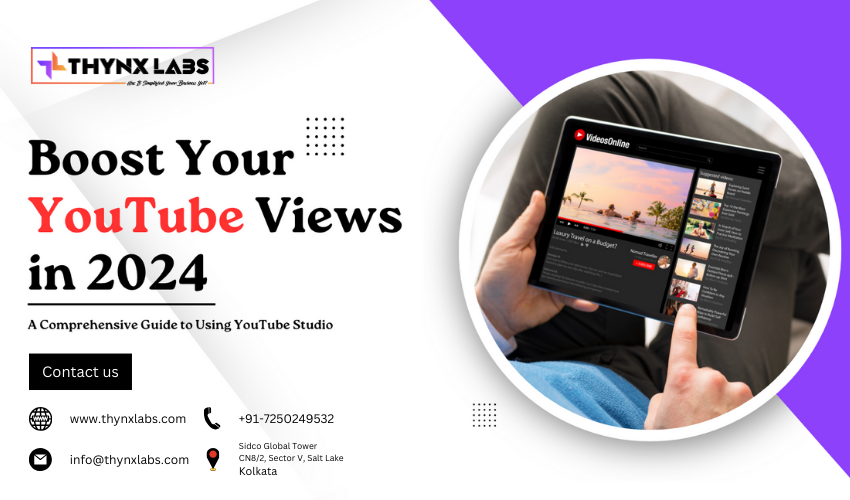How to do YouTube SEO for better Ranking?
YouTube is one of the most popular platforms for sharing and consuming video content. With millions of videos uploaded every day, it's important to optimize your YouTube videos to improve their visibility and ranking in search results. YouTube SEO (Search Engine Optimization) plays a vital role in increasing your video's organic reach and attracting more viewers. In this guide, we will explore effective strategies to improve your YouTube SEO and achieve better rankings.
- Keyword Research: Keyword research is the foundation of any SEO strategy. Identify relevant keywords that accurately describe your video content and have a high search volume. Utilize keyword research tools like Google Keyword Planner, SEMrush, or VidIQ to find popular and relevant keywords in your niche. Target long-tail keywords to increase the chances of ranking higher in search results.
- Optimize Video Titles: Craft compelling and keyword-rich titles for your videos. Include your target keyword near the beginning of the title to enhance its visibility. Keep the title concise and descriptive, attracting viewers' attention and indicating what they can expect from the video. A clear and compelling title can significantly impact your video's click-through rate (CTR) and overall ranking.
- Write Engaging Video Descriptions: YouTube allows you to provide a description for each video. Use this opportunity to provide a detailed and keyword-rich description that accurately represents the video's content. Include your target keyword naturally throughout the description, but avoid keyword stuffing. Write a compelling and engaging description that encourages viewers to watch the video and provides additional context and information.
- Utilize Relevant Tags: Tags help YouTube understand the context and content of your video. Include a mix of broad and specific tags related to your video's topic. Use relevant keywords as tags to improve the video's discoverability. Analyze the tags used by top-ranking videos in your niche and incorporate similar tags in your videos. However, avoid using irrelevant or misleading tags as it may negatively impact your video's ranking.
- Create Eye-Catching Thumbnails: Thumbnails are the first thing viewers see when browsing through YouTube search results. Design visually appealing and high-quality thumbnails that accurately represent your video's content. Use bold and contrasting colors, clear and readable text, and compelling images to attract viewers' attention. A well-designed thumbnail can significantly increase your video's click-through rate and improve its overall ranking.
- Engage Viewers with Captions and Subtitles: Including captions and subtitles in your videos not only helps viewers understand your content better but also improves your video's accessibility and SEO. YouTube automatically generates captions, but they may not always be accurate. Manually edit and proofread the captions to ensure accuracy. Additionally, transcribe the video's script and include it in the description to provide search engines with more context about your video's content.
- Encourage Viewer Engagement: YouTube considers viewer engagement metrics, such as likes, comments, and shares, when ranking videos. Encourage viewers to engage with your video by asking them to like, comment, and share. Pose questions or ask for feedback to encourage comments. Respond to comments promptly to foster engagement and create a sense of community around your videos.
- Promote Your Videos: Promotion plays a crucial role in improving your video's visibility and ranking. Share your videos on other social media platforms, embed them on your website or blog, and include them in relevant blog posts or email newsletters. Promote your videos to your existing audience and encourage them to watch, like, and share. Increased engagement and external traffic can positively impact your video's ranking.
- Analyze and Optimize: Regularly analyze the performance of your videos using YouTube Analytics or third-party tools. Pay attention to metrics like watch time, average view duration, audience retention, and click-through rate. Identify patterns and trends that can help you optimize future videos. Experiment with different strategies, such as video length, content format, and thumbnail design, to determine what resonates best with your audience and improves your video's ranking.
- Collaborate and Build Relationships: Collaborating with other YouTubers in your niche can expand your reach and attract new viewers. Partner with influencers or content creators who have a similar target audience and create collaborative videos or cross-promote each other's content. Building relationships with others in your industry can help you tap into their audience and increase your chances of ranking higher in search results.
In conclusion,
optimizing your YouTube videos for better ranking involves thorough keyword research, optimizing titles and descriptions, utilizing relevant tags, creating compelling thumbnails, engaging viewers, promoting your videos, analyzing performance, and building relationships within the YouTube community. By implementing these strategies and continuously optimizing your video content, you can improve your YouTube SEO and increase the visibility and reach of your videos.


